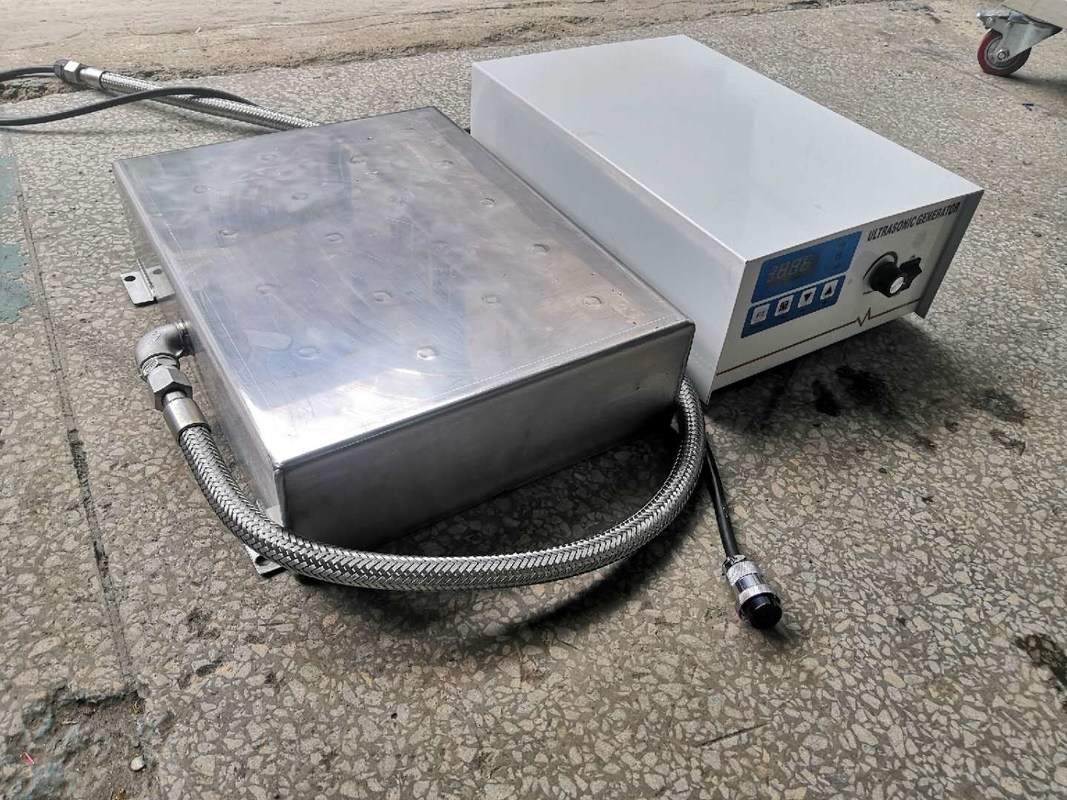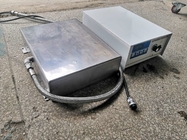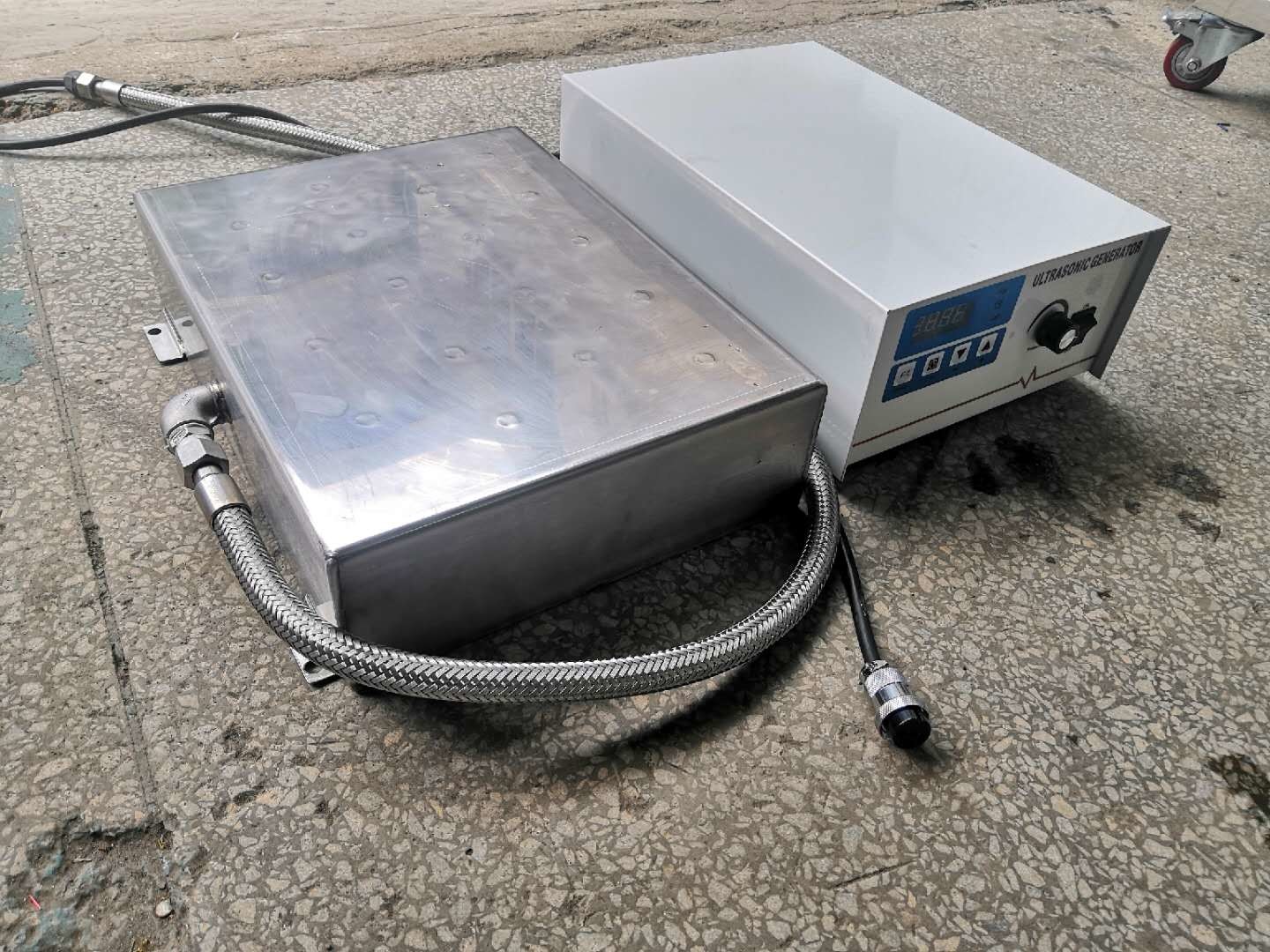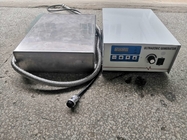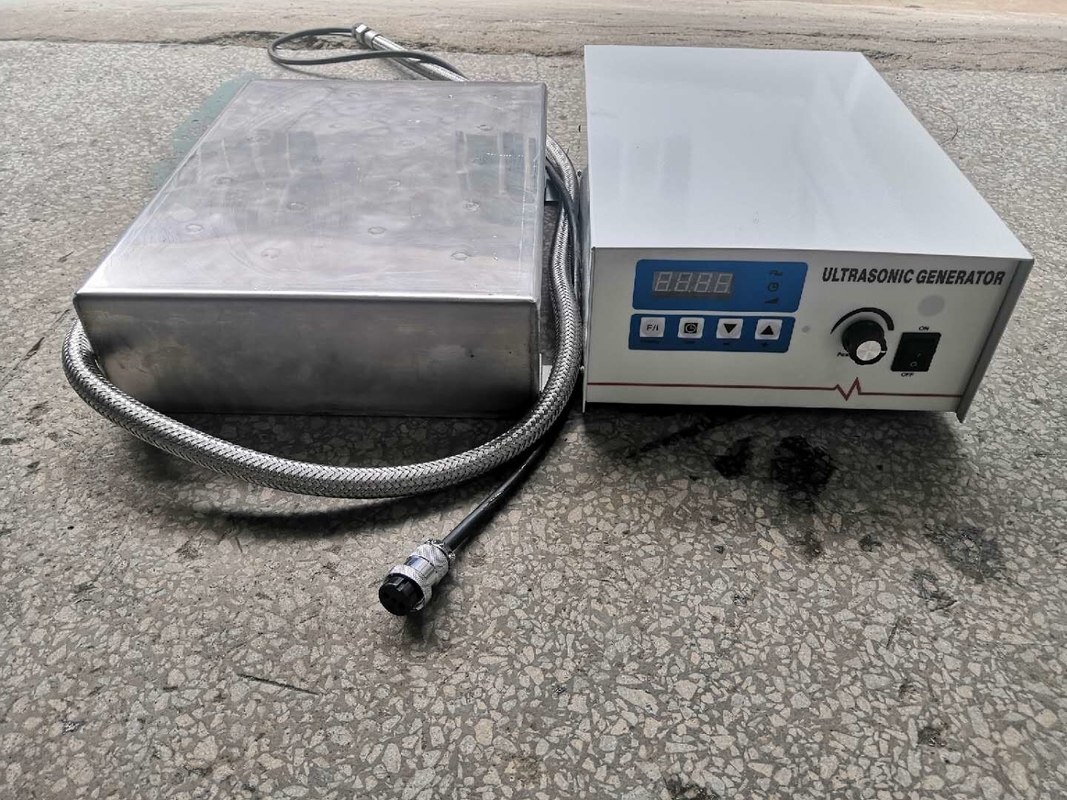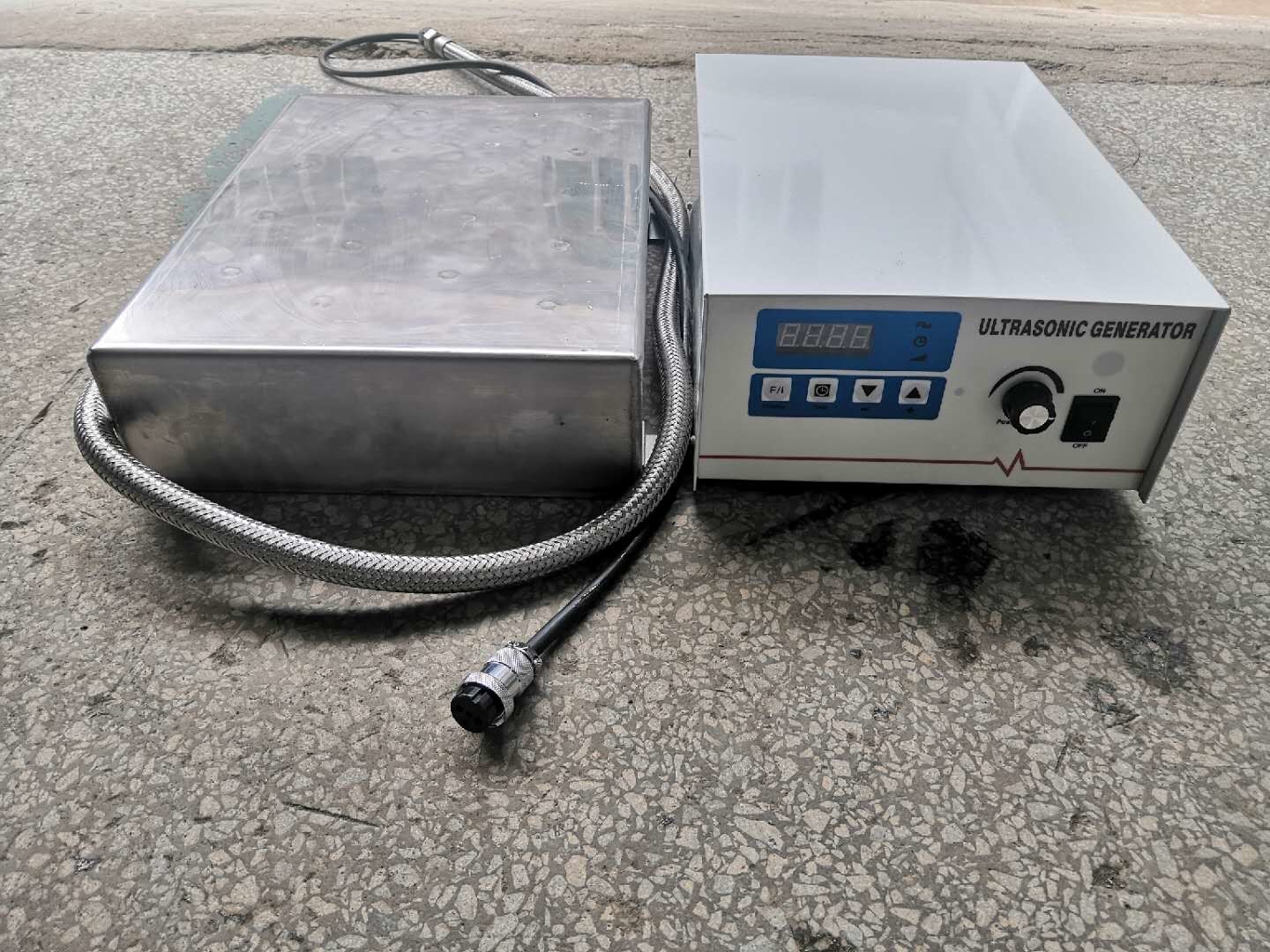Immersible Transducer Generator Cleaning System customized Transducer Box
Immersible Transducer Generator How It Works?
Ultrasonic cleaning uses sound waves to create millions of small bubbles in a tank of cleaning solution. The parts to be cleaned are submerged in the solution and as the bubble are formed and “explode” they remove any dirt, grease, carbon etc. This method also works very well. The one disadvantage that I noticed with ultrasonic cleaning is that aluminum parts do not come out of the cleaning tank looking like new. They seem to have some discoloration to them even though they were clean. If you are going to paint the parts then this shouldn't matter.
Immersible Transducer Generator BENEFITS
It cleans faster, reducing the time required for a cleaning cycle and is superior method for cleaning parts with cavities and blind holes.
It is efficient and requires less handling of parts – reducing the need for disassembly in order to clean.
Using water-based detergents reduces the need of harsh solvents which makes the process safer.
Ultrasonic cleaning requires minimal manual labour intervention, meaning staff are free to carry out other work.
Ultrasonic cleaning gives consistent results and does not require operator skills.
Ultrasonic cleaning means non-contact cleaning – only the contamination is removed, not the substrate.
How are ultrasonic waves produced?
When high frequency sound waves are passed through a cleaning fluid such as water with a suitable detergent additive, many millions of microscopic bubbles form and collapse. These bubbles are the result of the stretch and compress phrases of the sound waves within the fluid, the whole process is known as cavitation. Micro-bubbles will implode under the mechanical action of ultrasonic waves and a large amount of energy will be released and the local temperature will increase. The bubbles are forced into crevices where the fluid can penetrate between the contamination and the workpiece and leaving it totally clean and free of hidden soils.
The different Ultrasonic Submersible Transducer frequencies
25 KHz - The most powerful frequency to remove strong pollution. Do NOT use on mirror polish surfaces and sensitive materials like glass, aluminum...
40 KHz - Standard frequency which can be compatible on a wide range of material and for removing a lot of pollution.
80 kHz - This frequency is used to clean parts with complex geometry. Cavitation bubbles can go into small holes to remove the pollution.
120 kHz and Megasonic - Main application in precision optics to clean very sensitive parts like wafers. The power of cavitation is low so these frequencies are used on clean parts to remove dust in final cleaning.
The ultrasonic generator
The ultrasonic generator converts a standard electrical frequency of 60 Hz into the high frequencies required in ultrasonic transmission.
The ultrasonic frequency generator plays a key role in the overall performance of the system. Earlier generator designs developed a fixed frequency signal designed to operate at the resonant frequency of the transducer system. For example, if the design frequency of the transducer was 20 kHz, the generator developed exactly a 20 kHz signal. The problem with this design is that it tends to create hot spots and standing waves in the tank bath, providing uneven cleaning in different tank areas.
The development of sweep frequency generators eliminated these problems. In most any ultrasonic cleaning system, there are multiple transducers that make up the transducer system. Due to manufacturing tolerances, it is highly unlikely that each transducer will have exactly the same resonant frequency. With a fixed frequency generator, the transducers that are closest in resonant frequency will operate the most efficiently in their respective areas, creating an uneven cavitation pattern. By sweeping the frequency just slightly above and below the center frequency, all transducers see their resonant frequency at the rate of sweep and maximum efficiency occurs, eliminating hot spots. Sweep frequency also eliminates standing waves from occurring by repeatedly overlapping the wavelength.
Many ultrasonic generators also have “autofollow” circuitry. Autofollow circuitry is designed to maintain the center frequency when the ultrasonic tank is subject to varying load conditions. When parts are placed in the tank or when the water level changes, the load on the generator changes. With autofollow circuitry, the generator matches electrically with the mechanical load, providing optimum output at all times to the ultrasonic tank.
Ultrasonic Tank And Transducer Installation
Ultrasonic tanks are generally rectangular and can be manufactured in just about any size. Transducers are usually placed in the bottom or on the sides, or sometimes both when watt density (watts/gal) is a concern. The transducers can be welded directly into the tank, or watertight immersible units can be placed directly into the aqueous solution. In some instances, the immersibles may be mounted at the top of the tank facing down. For applications such as strip cleaning, one immersible is placed on the top and one on the bottom with minimal distance between them. The strip is then run through the very hard energy field. A tank should be sturdy in construction, ranging from 11-14 gauge in thickness. Larger, heavy-duty industrial tanks should be 11-12 gauge and should contain the proper stiffeners for support due to the weight of the solution.
Our immersible transducer is custom designed for your particular application and tank size. It can be incorporated into existing tanks of any size and converted it into ultrasonic tank. It is controlled by our unique Pulse Swept Pleasecontact us for specific information on how we can create one for your Immersible Transducer needs.
The range of immersible transducers come in various sizes ultrasonic powers and operating frequencies. We can select the size you need based upon your cleaning requirements and tank size. The immersible ultrasonic transducer systems are portable and can be moved from one tank to another if required. They are most suited to when you have already a tank installed in your production process or we can supply the complete system including the tank.
Immersible ultrasonic transducers are designed for use in new or existing cleaning tanks to improve the speed and effectiveness of rinsing cleaning and other processes. Single or multi- module units can be custom designed for tanks of any size.
Immersible transducer Types:
Bottom Monunted -over Top Junction Box
Bottom Mounted with dual Bulkhead
Bottom Mounted With single Bulkhead
Bottom Mounted With Over The Top Pipe
Side Mounted With Over the Top Pipe
Side Mounted With Bulkhead Thru Side Wall
Mounting may be either wall or bottom mounted, depending on the application. The units are shipped fully assembled and require only simple insertion into the tank prior to operation.
Specifications:
| Model |
Material |
Transducers |
Estimated volume |
Box size |
Cable
lead-out |
Ultrasonic frequency |
Ultrasonic power |
| (mm) |
(pcs) |
(L) |
(mm) |
|
(kHz) |
(W) |
| TZ-1003 |
SUS304/SUS316L |
3 |
15 |
250x150x100 |
Rigid tube/
Flexible tube |
28/40 |
150 |
| TZ-1006 |
6 |
30 |
305x250x100 |
300 |
| TZ-1012 |
12 |
60 |
355x250x100 |
600 |
| TZ-1018 |
18 |
90 |
406x305x100 |
900 |
| TZ-1024 |
24 |
120 |
500x355x100 |
1200 |
| TZ-1030 |
30 |
150 |
550x406x100 |
1500 |
| TZ-1036 |
36 |
180 |
500x460x100 |
1800 |
Enhance the cleaning power of your existing tank with AGSONIC Submersible Ultrasonic Cleaning Systems
For customers who would like to improve the cleaning power of their existing tank by installing an ultrasonic cleaning device, AGSONIC's submersible system may be the most economical and efficient choice on the market.
However, before buying a submersible system, please consider the tank you already have and its material of construction.


 Your message must be between 20-3,000 characters!
Your message must be between 20-3,000 characters! Please check your E-mail!
Please check your E-mail!  Your message must be between 20-3,000 characters!
Your message must be between 20-3,000 characters! Please check your E-mail!
Please check your E-mail! 
